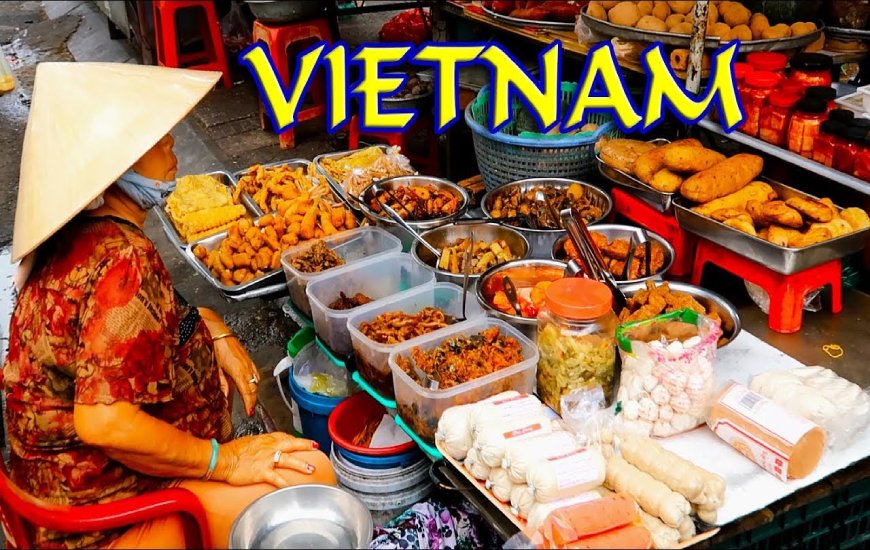In Vietnam, before eating we say “Chúc ngon miệng!”– meaning ‘enjoy your meal’ (but of course you will.)
While Vietnamese cuisine abroad still flies under the banners of phở and bánh mì, the full spectrum of Vietnamese food is a symphony of delightfully textured, bright and piquant flavours.
The Vietnamese love their food and cooks make the most of each region’s abundance produce and special ingredients to make their meals. Northern food is known for its simplicity; the dishes of central Vietnam are generous in spice and quantity; Southerners like to add sugar. Wherever you travel across the country, you’re sure to eat well.
1. Pho
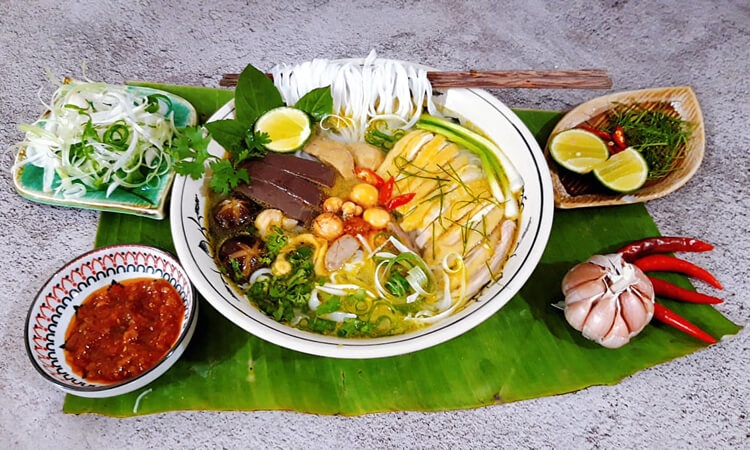
Phở is the quintessential Vietnamese dish, the word phở referring to the type of noodle used in the recipe. Flat rice noodles dance around with medium-rare slivers of beef or boiled chicken in a hearty beef stock. The more popular of the two widely known varieties is phở Hanoi. Originally from the north, it is distinguished by a clear broth and dressed only with a squeeze of lemon and slices of bird’s eye chili. The southern iteration, phở Nam, has a murkier broth and is served with a bouquet of fresh herbs like bean sprouts, basil and mint.
The secret to a good bowl of phở lies in its stock. The broth is usually infused with fragrant star anise, clove and cinnamon to lend a natural sweetness to the mix. This dish is found on almost every street corner and is actually consumed for breakfast, unbeknownst to outsiders.
Try it: Pho Thin, 13 Lo Duc, Hai Ba Trung District in Hanoi or Pho Hoa, 260C Pasteur Street, District 3 in Ho Chi Minh City
2. Banh Mi
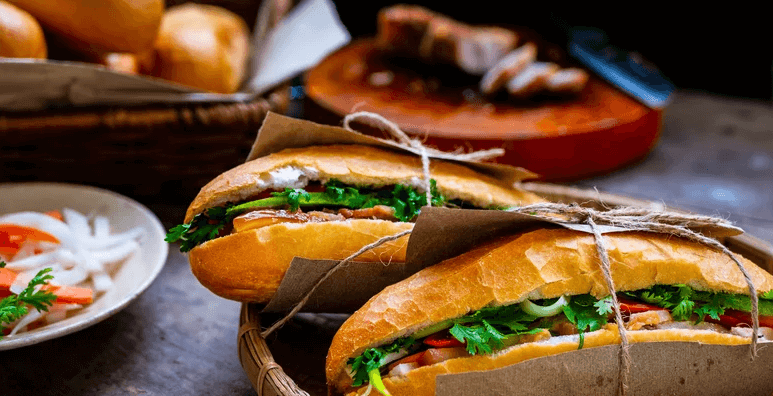
Baguettes may have been adopted from the French, but bánh mì is as Vietnamese as it comes. Paté and margarine are spread swiftly across the soft, chewy interior of a baguette and later, the sandwich is loaded with pickled vegetables, fresh cilantro, pork belly, pork floss and cucumber. Sink your teeth into the crunchy crust and watch the warm roll give way to a whole scheme of textures.
Try it: Banh My Phuong, 2B Phan Chau Trinh, Hoi An
3. Com Tam
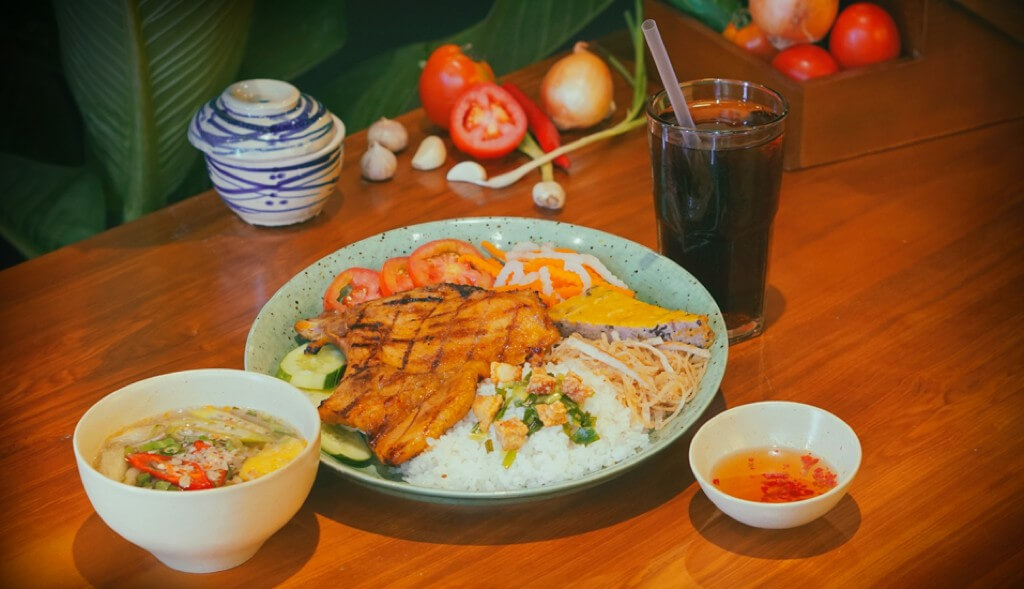
Back in the day, Vietnamese farmers would eat the fractured rice grains they could not sell. Nowadays, “broken” rice is a food staple for the everyday working-class citizen. For a meal of humble origins, the preparations for cơm tấm can get very decadent.
While it’s prepared in a number of ways, the most popular is cơm tấm sườn nướng ốp la. A fried egg is paired with caramelised grilled pork chop and laid out on a generous heap of broken rice. The dish is then slathered with nước chấm, a mixture of chilli, fish sauce and sugar, and a drizzle of green onion oil. The final touches include a side of shredded pickled carrots and daikon, slices of cucumbers and tomatoes, and crushed fried pork rinds and shallots for garnish.
Try it: A family-operated stall on 260 Vo Van Tan, District 3, Ho Chi Minh City
4. Cao Lau
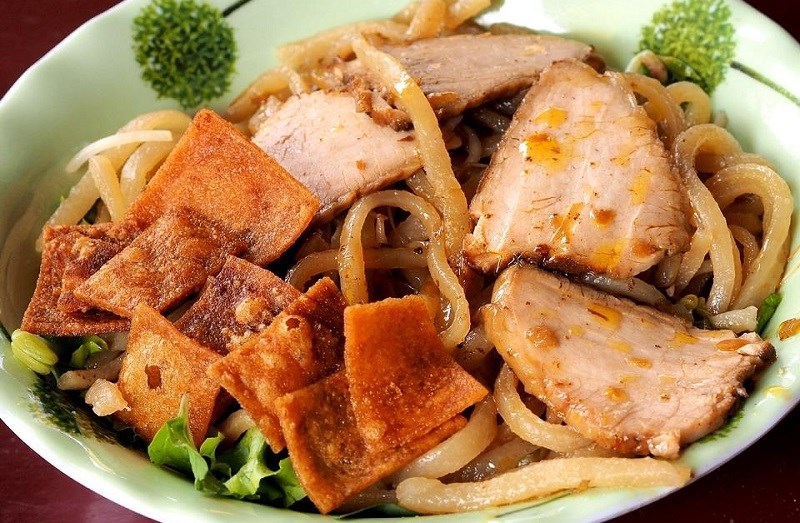
A dish unique to Hoi An, cao lầu is beyond compare. Saluting the history of the coastal trading port from where it originated, this sensuous bowl of noodles is a fusion of Japanese, Chinese and Vietnamese influences. Slices of Chinese barbecued pork are fanned over cao lầu noodles. These thick noodles, with the same heft as Japanese udon, are then doused with a spice-laden broth and topped with fresh herbs and crushed pork cracklings. Authentic cao lầu is said to be made from the water found in the thousand-year-old Ba Le well in Hoi An, rumoured to have magical properties.
Try it: Thanh Cao Lau, 24 Thai Phien St, Hoi An
5. Com Ga
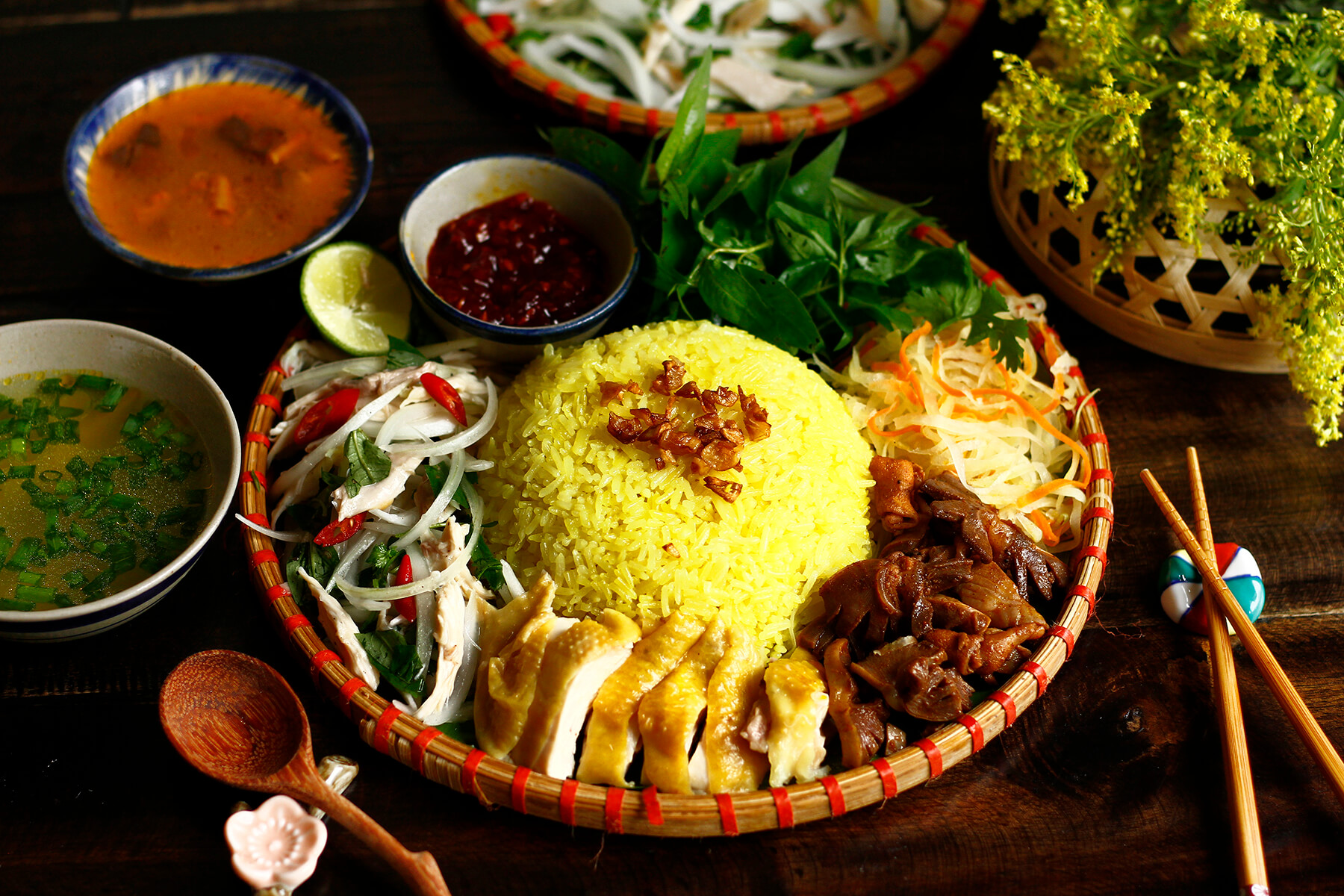
Chicken and rice is a foolproof combination. But in Hội An, this delicious duo is elevated using fresh ingredients from the countryside. Strips of tender chicken are shredded, mixed with flavoured fish sauce and onions to accompany a bowl of turmeric rice. Pickled shallots, radish and herbs are served on the side. Cooks from all over the country have their own secrets to set their turmeric rice apart. Classic Hội An chicken rice is topped with a few leaves of Vietnamese coriander and hot mint to balance out the zesty chicken marinade and soft, young eggs. After a day exploring the Ancient Town on foot, a plate of golden chicken rice is simply the perfect treat.
Try it: Com Ga Hien, 539 Hai Ba Trung St, Hoi An
6. Mi Quang
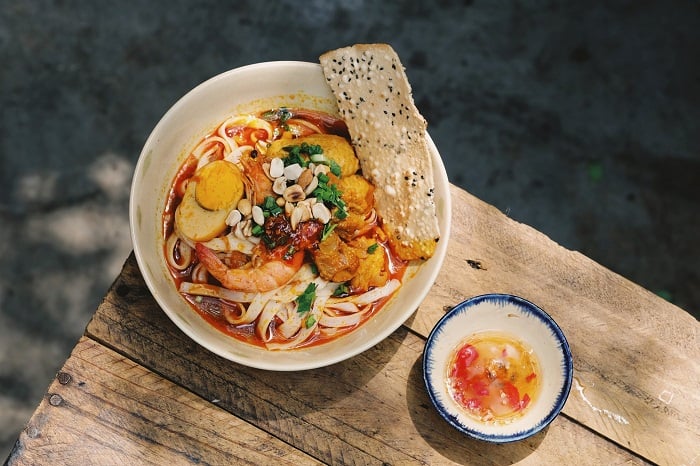
Part soup, part salad, mì quảng gracefully pulls off an identity crisis. That being said, don’t let the elegance of mì quảng fool you. This light and springy noodle dish from the Quang Nam province in Central Vietnam is street food. The vibrantly yellow noodles owe their rich colour to the turmeric-infused broth made rich with peanut oil. Only a ladleful is used in the making of this “soup”, which can be topped with anything from shrimp and chicken to pork belly and snakehead fish. Eat mì quảng with sliced banana flowers, Vietnamese coriander, basil and bánh tráng me, toasted sesame rice crackers.
Try it: Quan Mi Quang Ba Mua, 95 Nguyen Tri Phuong, Chinh Gian, Thanh Khe, Da Nang
7. Banh Xeo
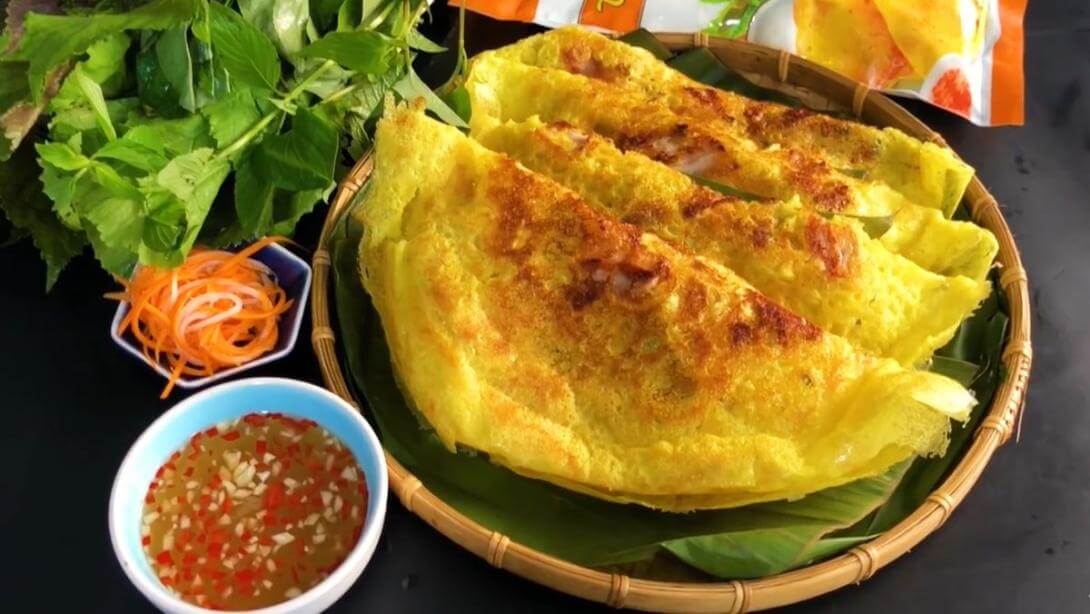
A Mekong Delta creation, bánh xèo is widely eaten around south and central Vietnam. Watching the crispy crepe being assembled is an audio-visual experience: the batter crackles loudly when it hits the hot pan—xèo meaning sizzling—and the edges gradually curl and golden as the skilled xèo maker deftly swirls the pan to evenly spread out the dense batter. The batter, traditionally made from rice flour and coconut milk, owes its yellowish hue to the addition of turmeric. Another French-inspired delight, the savoury pancake is filled with slices of boiled pork, minced pork, bean sprouts and shrimp and then folded in the manner of a crepe. A bánh xèo shouldn’t be too soggy and is best appreciated fresh off the skillet.
Try it: Banh Xeo 46A, 46A D Dinh Cong Trang, District 3, Ho Chi Minh City
8. Bun Cha
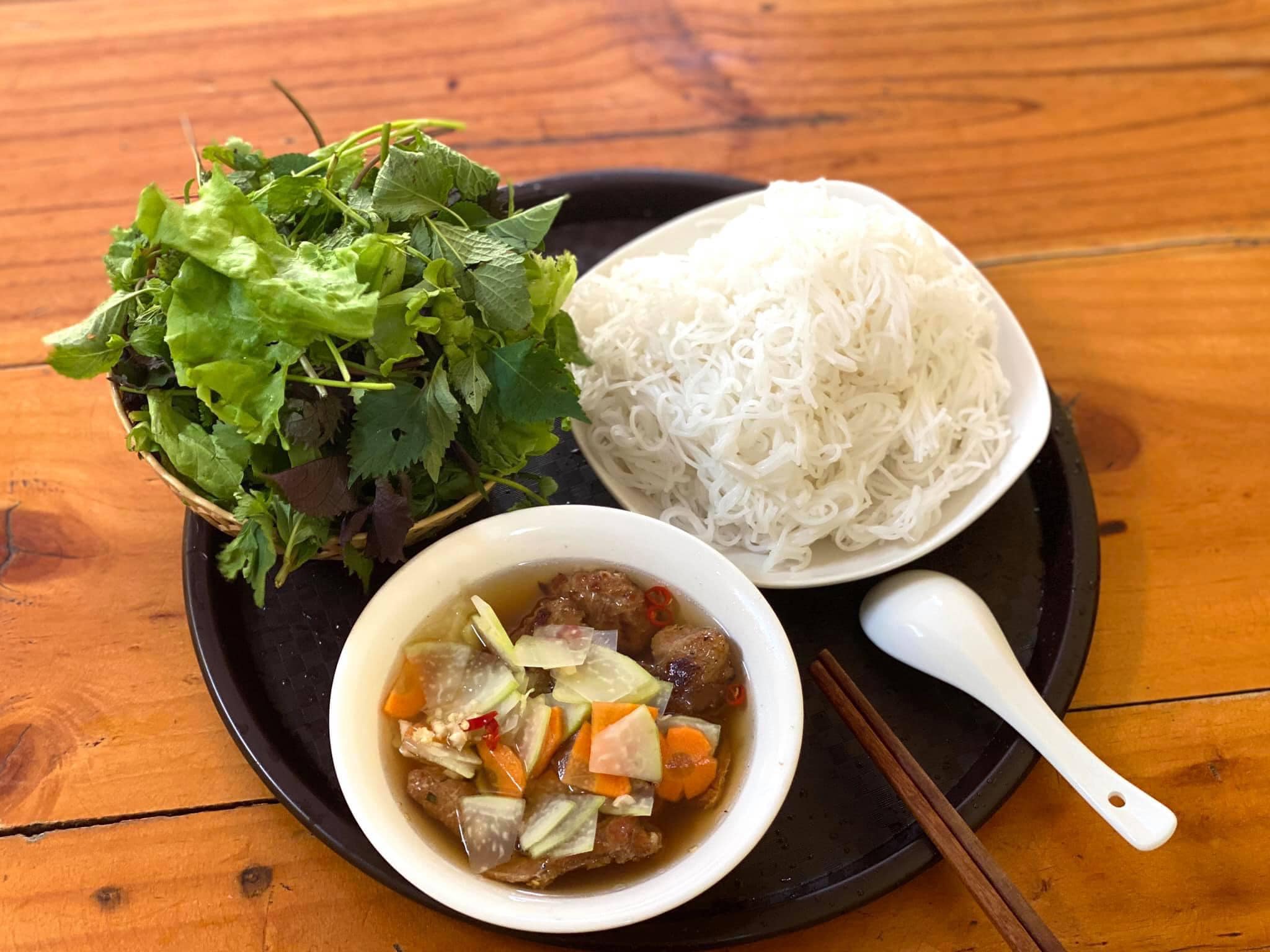
Bún chả became an overnight sensation after President Obama was pictured scarfing down a bowl of these grilled pork patties with Anthony Bourdain. But this speciality of the Old Quarter in Hanoi has always been popular among the locals. Around lunchtime, the scent of pork grilling over hot charcoal wafts down the sidewalks, filling the noses of hungry Hanoians.
This classic northern dish is comprised of cold bún (rice vermicelli); slices of seasoned pork belly; a mountain of fresh herbs and salad greens; and last but not least, medallions of minced pork swimming in a bowl brimming with a fish sauce-based broth. The go-to approach is to scoop small bundles of bún into your broth bowl and rotate between eating the noodles, the pork and the greens.
Try it: Bun Cha Huong Lien (also known as Bun Cha Obama), 24 Le Van Huu, Phan Dinh Ho, Hai Ba Trung, Hanoi
9. Xoi
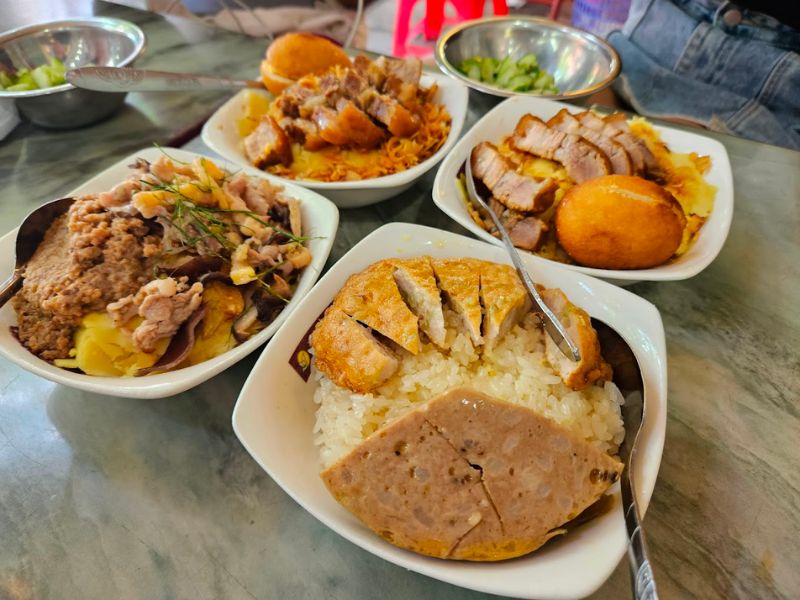
Xôi, Vietnamese sticky rice is a departure from other sticky rice interpretations in the region. The weighted, more dense glutinous staple is comes in a savoury or a sweet option. Xôi mặn, savoury xôi, is a popular, inexpensive breakfast fix. Hankering for something sweeter? There are over 20 types of xôi ngọt; but if you’re hoping to mesmerised, you’re in luck. Xôi ngũ sắc, the five-coloured xôi, is a psychedelic swirl of purple, green, red, yellow, and white, pigmented using natural plant extracts.
Try it: Xoi Yen, 35B Nguyen Huu Huan, Ly Thai To, Hoan Kiem, Hanoi
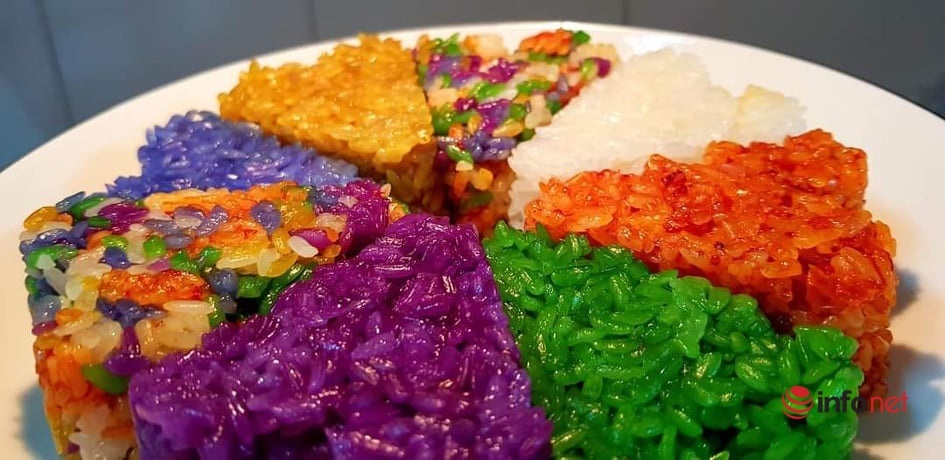
10. Bun Rieu
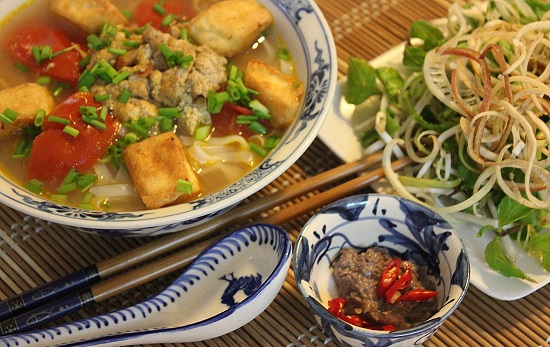
The interplay between crab and tomato makes bún riêu a truly standout dish. A hearty soup bursting with acidity, the components of this meal include slippery bún, fresh crab meat, blocks of tofu and stewed tomatoes. Cooking an authentic bowl of bún riêu is a labour-intensive process. After the crab meat is separated from the body, the shell is then pulverized using a mortar and pestle and then strained through to form the base of the broth. Floating around the bowl are pillowy clusters of minced crab combined with ground pork and egg that melt in your mouth.
Try it: Bún Riêu Cua Thanh Hồng, 42 Hòa Mã, Ngô Thì Nhậm, Hai Bà Trưng, Hanoi
11. Nom Hoa Chuoi
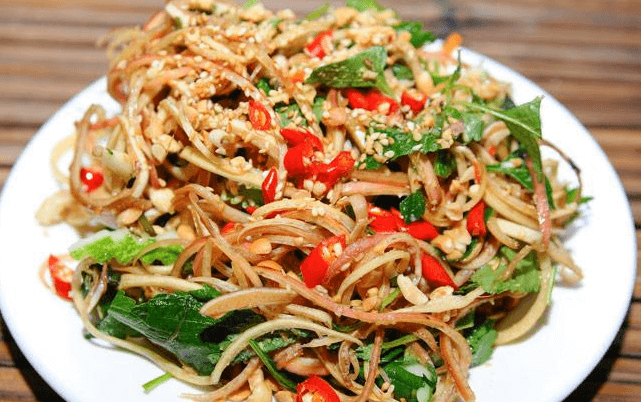
Nộm hoa chuối is a stunning array of shredded banana flowers tossed with pickled carrots, coriander, lotus root, and cabbage. Depending on the season, pomelo and julienned green mango or papaya can be added to the jumble. In some preparations, you’ll find the addition of chicken, beef and/or shrimp although it can also be served as a vegetarian dish. The salad is bound with nước chấm sauce and decorated with crushed peanuts and bird’s eye chilli. For a refreshing punch, hit it with a squeeze of lime.
Try it: Mountain Retreat, 36 Le Loi, Ben Nghe, District 1, Ho Chi Minh City
12. Banh Cuon
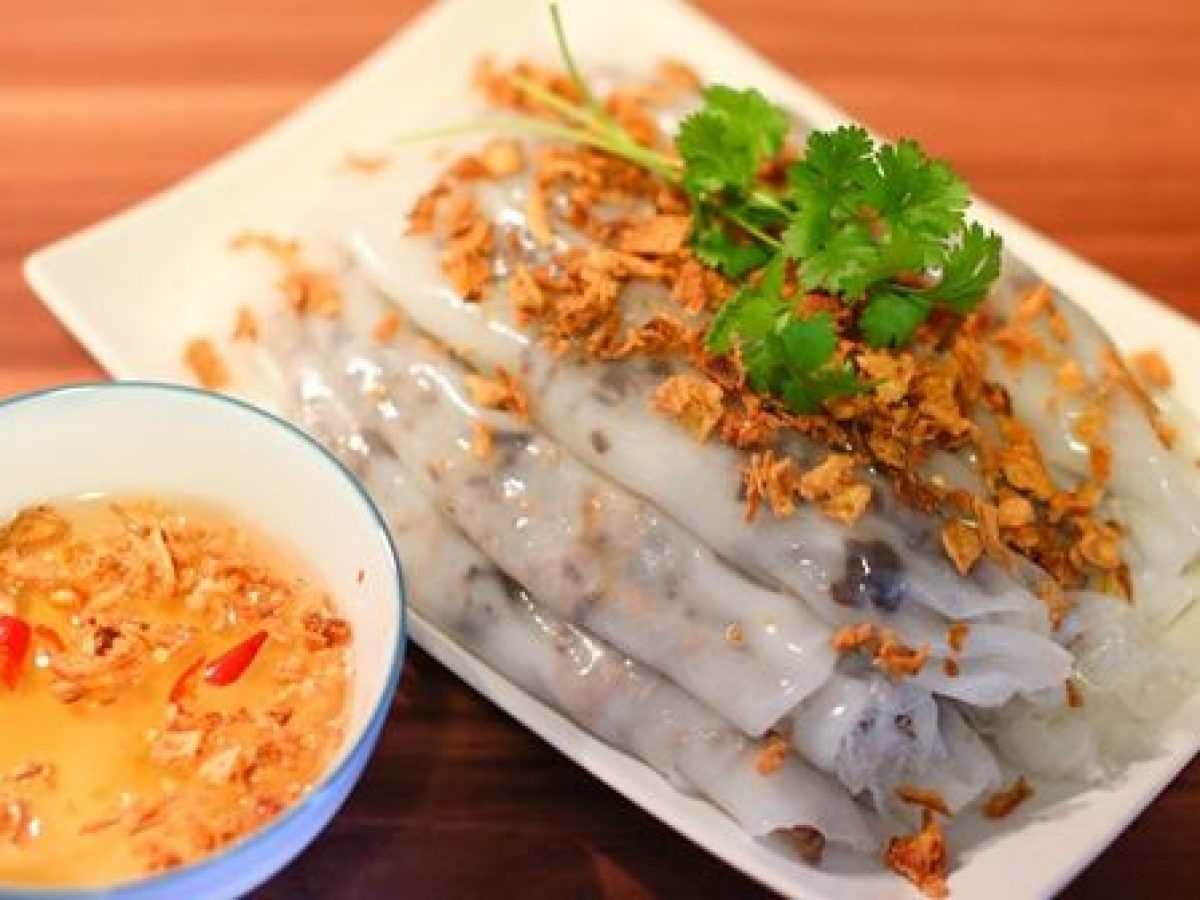
Made from large round sheets of steamed rice flour, gathered around minced pork and wood-ear mushroom and gently folded and chopped, bánh cuốn is a delight. This savoury treat is always made fresh-to-order, topped with dried shallots and served with a side bowl of fish sauce with pork sausage. Enjoy it for breakfast, like a local, and feel free to add fresh herbs to the mix and brighten up your bite.
Try it:Bánh Cuốn 101 Bà Triệu, 147 Triệu Việt Vương, Hai Bà Trưng District, Hanoi
13. Che

Chè is a sweet dessert, served either hot or cold and in the form of a pudding or dessert soup. Cold chè is filled with jellied ingredients and tropical fruits such as bananas, mangoes and longan, usually doused in coconut cream. Always a textural adventure, you’ll be surprised to encounter coconut shreds, crushed ice, lotus seed and jellies in these syrupy snacks. The beautiful three-coloured dessert, chè ba màu is often called the rainbow dessert. This is a layered spectacle of red beans, mashed mung beans and pandan jelly, topped with crushed ice and coconut milk.
Try it: Che 95, 95 Hang Bac, Hoan Kiem, Hanoi

